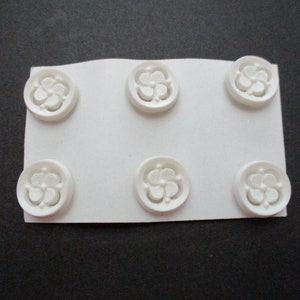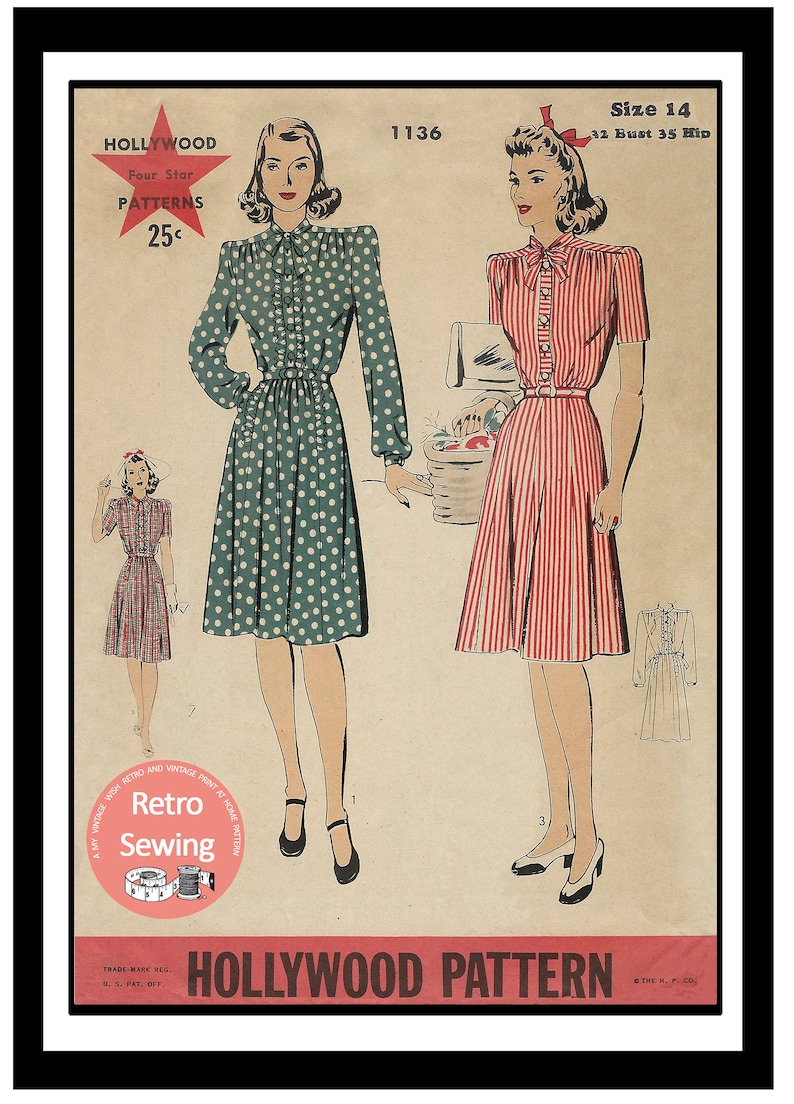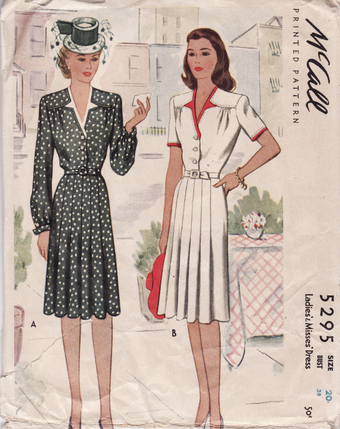 |
| 1943; Hollywood Four Star Patterns #1136; 1940's Wartime High Neck Pussy Bow Tea Frock |
The Supplies:
- 1943 Hollywood Four Star Patterns #1136, purchased from MyVintageWish on Etsy $12.19
- 1940's 5/8" Plastic Buttons on Original Card, purchased from NevadafuffsStuff on Etsy $6.48
- White 16" invisible zipper $0.12
- Blue-green gingham full flat sheet, 50/50 cotton polyester; JC Penney Home Collection Smooth Touch; measuring 101x81 inches when seams ripped out and ironed $2
- White thread
Total Cost: $20.79
 |
| NevadafuffStuff product image |
The Process:
I bought this cotton-polyester blend full flat sheet at a local thrift store for $2 and absolutely love it. The sheet was in great condition and is quite thick and durable, perfect for a house/day dress. I'm not sure how cool it will be in the summer, but so far it's been working for spring. The pattern was relatively easy to follow for the first half and then I abandoned the written directions halfway through. Hey, progress!
I was debating putting in pockets and had them installed at one point, but they were so infuriatingly small. 😂
The zipper took me about 5 times to install, the 4th time I thought I had finished but there was no bobbin thread. Whoops!
I also debated adding the ruffles to the bodice for added interest, but I think I'd prefer to sew it up in a solid color so I can highlight those details.
 |
| Button closeup and daisy stitch closeup |
Overall, it was a fairly straightforward pattern and was easy to size up to my measurements. I added an additional 2 inches to the bodice bust, 1 inch to the bodice waist, and 1/2 inch to the bodice length. I ended up adjusting the sleeve width in order to fit the arm scythe due to widening the bodice. I forgot to add the additional length to the center band but I was able to make it work thanks to have a pussy bow around the neckline hiding the dip. I did not add any extra width to the skirt pieces as I figured if I needed extra fabric to work with that I could sew a slightly smaller seam allowance for all the skirt pieces.
This pattern checks off almost all the things I love in a dress, minus the missing pockets. The sleeves have great mobility, the skirt is very comfortable, and the waist has some ease.
The only things I would change are the aforementioned pocket size, and substituting the gathered skirt front of View 1 and substituting it with View 3's skirt front that is made in 1 piece instead of 2 separate pieces as I dislike seams going down the middle of a skirt front.
 |
| Kitty bomb! |


























